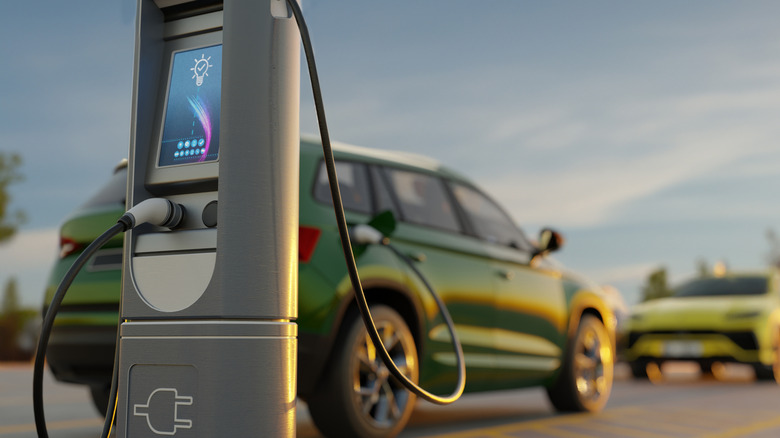Top 5 US States with the Least Public EV Charging Stations

Understanding Range Anxiety and the Growth of EV Infrastructure
For prospective electric vehicle (EV) buyers and existing EV owners, range anxiety remains a significant concern. While at-home charging typically covers daily driving needs, long-distance travel can be challenging without access to public charging stations. Planning for any substantial trip in an EV is essential, especially if you live outside of urban areas where public chargers are less common. However, the situation is gradually improving as EV infrastructure expands across the country.
The United States now has approximately 75,000 publicly available EV charging stations, with more being added regularly. These stations vary in size, ranging from those with just a few chargers to large hubs that can accommodate dozens or even hundreds of vehicles. In total, there are over 225,000 charging ports available nationwide. The Department of Transportation (DOT) has been supporting this growth through the National Electric Vehicle Infrastructure (NEVI) program, which provided funding to state governments to enhance EV charging networks. This funding could cover up to 80% of installation, operation, and maintenance costs. However, it's important to note that the NEVI program was suspended in February 2025, and its future remains uncertain.
Despite these challenges, some states have made significant progress in developing their EV infrastructure. On the other hand, certain states still struggle with limited access to charging stations, making them less appealing for EV drivers.
States With the Most Difficult EV Charging Access
Alaska: The State With the Fewest EV Charging Stations
Alaska is the largest state in the U.S. by area but has the fewest public EV charging stations. There are only 65 stations with 155 total ports in the entire state. This represents just 0.08% of the country’s total charging stations. The low number of chargers is partly due to Alaska's sparse population—around 750,000 people—and its extreme climate, which can affect battery performance. Additionally, Alaska lacks fast charging stations outside of Juneau, the capital city.
However, there are some options for home charging. The Alaska Electric Light and Power Co. offers off-peak rates for charging between 10 p.m. and 5 a.m., and residents can rent charging equipment for use at home.
North Dakota: Last in EV Market Share
North Dakota has the lowest EV market share in the country. In 2024, EVs accounted for less than 2% of new car sales in the state, compared to 10% nationally. Despite having only 100 public charging stations with 248 ports, the state ranks second in charger-to-EV ratio, with about one charger for every 10 EVs. North Dakota received $25.9 million in NEVI funding before the program was halted, along with $1.2 million from another federal initiative. The state aims to place fast chargers within a mile of freeway exits and no more than 50 miles apart.
Wyoming: Limited EV Infrastructure
Wyoming has 106 charging stations with 294 ports, which is nearly double Alaska's number. However, the state still ranks second-lowest in EV adoption, with around 1,000 registered EVs. The low adoption rate may be influenced by the state's vast open spaces, cold winters, and cultural resistance to EVs. Despite this, some unexpected locations, such as Red Canyon Ranch, offer EV charging opportunities. Wyoming also received $5.5 million in federal funding to improve infrastructure in Jackson.
South Dakota: An EV Desert
South Dakota has 111 public EV charging stations with 300 ports, serving a population of about 925,000. The state has plans to expand its charging network, but these efforts are affected by the suspension of the NEVI program. South Dakota does not offer tax incentives for EV purchases or registration discounts, which may further hinder adoption. Current infrastructure is mostly Level 1 and Level 2 chargers, with a focus on adding Level 3 fast chargers near freeways.
Montana: Slow Growth in EV Infrastructure
Montana has 149 public EV charging stations with 459 ports, despite a population of over one million. The state received $43 million in NEVI funding and is working to build more infrastructure in high-population areas like Missoula. While some chargers are available in tourist destinations such as Glacier National Park, many parts of the state remain underserved.
Why EV Infrastructure Matters
Currently, EV charging infrastructure is concentrated in urban centers. California leads in the number of charging stations, followed by Texas, New York, and Florida. However, expanding infrastructure into less populated areas is crucial for increasing EV adoption. More chargers mean more accessibility, which encourages people to consider electric vehicles. Improved infrastructure benefits not only residents but also travelers passing through these regions.
Governments are adopting a "if you build it, they will come" approach, believing that better infrastructure will lead to higher EV adoption. As the demand for EVs grows, so too must the availability of charging stations across the country.
Post a Comment for "Top 5 US States with the Least Public EV Charging Stations"
Post a Comment